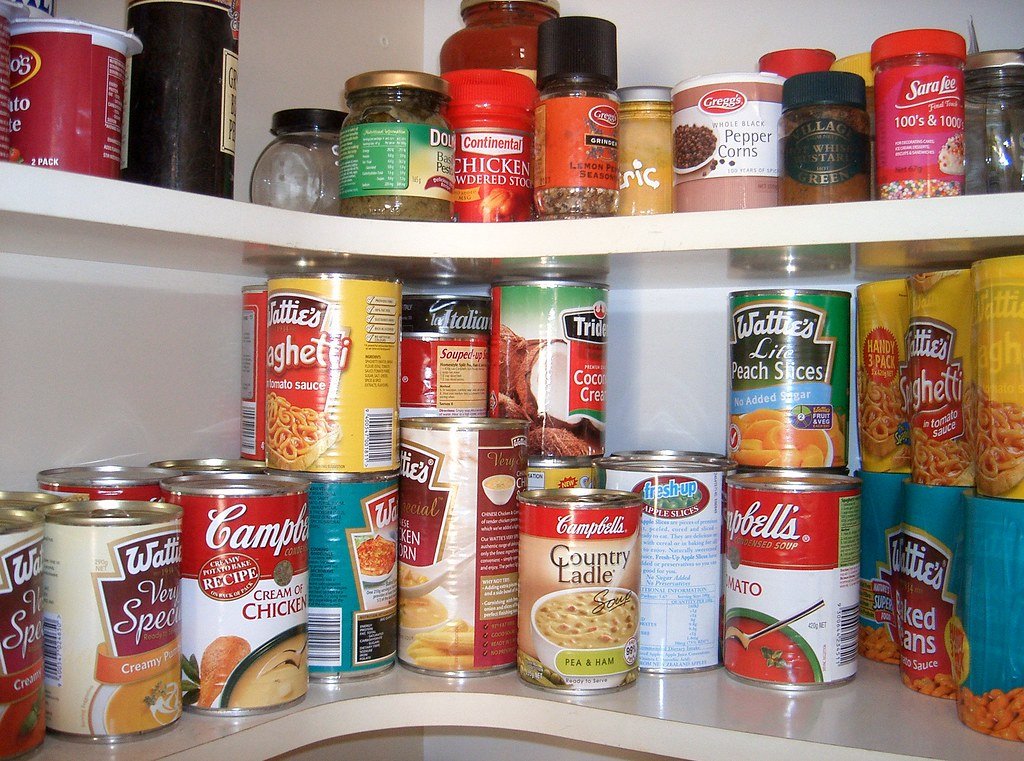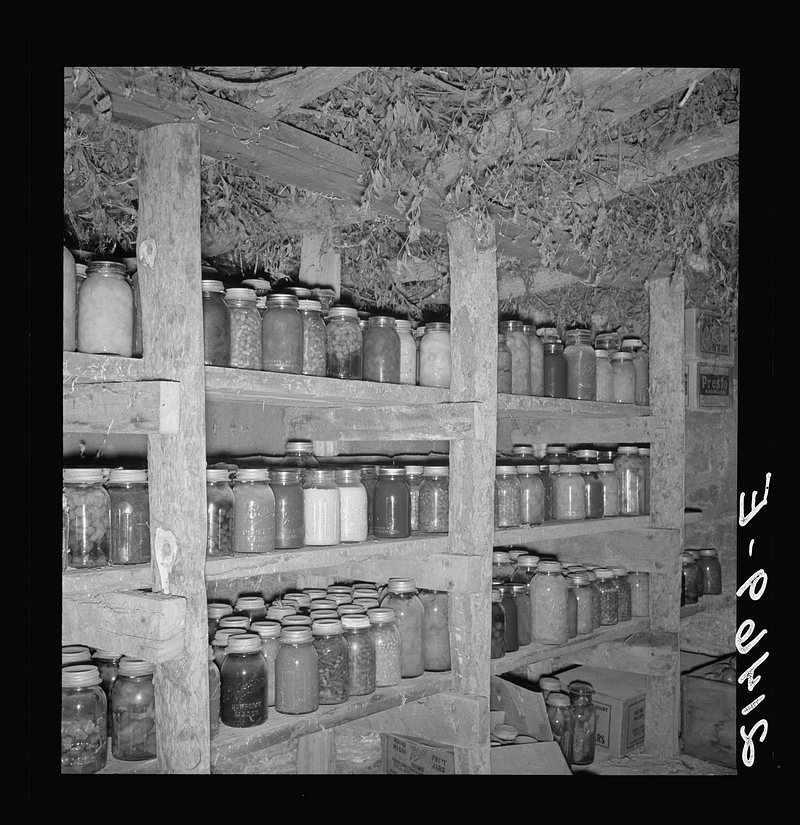Now Reading: How to Make Your Own Canned Foods
-
01
How to Make Your Own Canned Foods

How to Make Your Own Canned Foods
Canned foods have been a staple in pantries around the world for decades, offering convenience, longevity, and a burst of nostalgia with every pop of the can opener. But have you ever wondered how those perfectly preserved tomatoes, crisp green beans, or succulent peaches ended up snugly nestled inside those metal containers? Well, prepare to embark on a culinary adventure, as we unravel the secrets of making your own canned foods right in the comfort of your own kitchen. From mastering the art of pickling to achieving that perfect vacuum seal, this article will guide you through each step, equipping you with the skills to preserve the season’s freshest produce and indulge in the warmth of homemade canned delights throughout the year. So tie on your apron, dust off those mason jars, and let’s dive into the enchanting world of DIY canning.
Table of Contents
- Introduction: A Simple Guide to Creating Your Own Canned Foods
- Choosing the Right Ingredients for Long-lasting Preservation
- Mastering the Art of Sterilization: Ensuring Safe and Healthy Canning
- Expert Techniques for Flavorful and Nutritious Canned Goods
- From Jams to Pickles: Exploring Versatile Canning Recipes
- Q&A
- To Wrap It Up

Introduction: A Simple Guide to Creating Your Own Canned Foods
Embark on a culinary adventure and savor the satisfaction of creating your very own canned foods! In this comprehensive guide, we will unravel the secrets behind one of the oldest food preservation methods known to humankind. Whether you’re a seasoned home cook or just starting your culinary journey, this guide will provide you with all the essential knowledge and techniques you need to confidently fill your pantry with delicious, homemade canned goods.
With the resurgence of sustainable living and a desire to know exactly what goes into our food, canning has become a popular practice for preserving seasonal bounties, family recipes, and unique flavor combinations. By canning your own foods, you have complete control over the ingredients, flavors, and even the level of sodium. Plus, the taste and quality of homemade canned goods are unparalleled!
Throughout this guide, we will explore the step-by-step process of canning, from preparation to storage. Discover the equipment you’ll need, learn safety precautions to ensure both taste and health, and explore a variety of classic and contemporary recipes to awaken your culinary creativity. So, gather your jars, sharpen your knives, and let’s delve into the captivating world of homemade canned foods!

Choosing the Right Ingredients for Long-lasting Preservation
Preserving food is an art that requires careful selection of ingredients. When it comes to long-lasting preservation, it’s vital to choose the right ingredients that not only protect your food but also maintain its taste and quality for an extended period. Here are some essential tips to keep in mind:
- High-quality produce: Start with the freshest fruits and vegetables available. Opt for organic options whenever possible, as they tend to have a higher nutrient content and fewer chemical additives.
- Acidic ingredients: Incorporate acidic ingredients like lemon juice, vinegar, or citric acid to help preserve the food’s color, texture, and freshness. These natural preservatives create an inhospitable environment for bacteria and prolong shelf life.
- Spices and herbs: Don’t forget the power of spices and herbs! They not only enhance the flavor of your preserved food but can also offer antibacterial and antifungal properties. Cinnamon, cloves, oregano, and rosemary are examples of spices and herbs known for their preservation qualities.
- Salt: Salt is a well-known ingredient used in preservation. It draws out moisture from the food, inhibits bacterial growth, and acts as a natural preservative. However, it’s essential to find the right balance, as excessive salt can alter the taste of your preserved goods.
Remember, the secret to successful long-lasting preservation lies in choosing the right combination of ingredients. By carefully selecting high-quality produce, incorporating acid, spices, herbs, and salt into your recipes, you can create preserved foods with a prolonged shelf life while maintaining their deliciousness.
Mastering the Art of Sterilization: Ensuring Safe and Healthy Canning
Sterilization is a crucial step in the canning process to ensure the safety and health of the food we consume. By properly sterilizing our cans, we can prevent the growth of harmful bacteria and extend the shelf life of our preserved goods. Here are some key tips and techniques to help you master the art of sterilization:
- Start with clean equipment: Before beginning the canning process, make sure all your utensils, jars, and lids are thoroughly cleaned. Use hot, soapy water and rinse them well to remove any dirt or residue.
- Boiling-water canning: This method of sterilization is ideal for high-acid foods, like pickles and fruits. Place the filled jars into a large pot of boiling water, ensuring they are completely submerged. Boil for the recommended time to destroy any bacteria that may be present.
- Pressure canning: This method is necessary for low-acid foods, such as meats and vegetables. It involves using a pressure canner to reach temperatures higher than boiling water. The increased heat and pressure are effective in killing harmful microorganisms and ensuring safe preservation.
- Timing is everything: Follow the recommended processing times for each recipe. Over-processing may result in overcooked food, while under-processing can lead to contamination. It’s essential to find the right balance.
- Storage and labeling: Once the sterilization process is complete, store your properly sealed and labeled jars in a cool, dark place. Regularly check for any signs of spoilage and discard any cans that show signs of bulging, leaking, or unusual odors.
By mastering the art of sterilization, you can confidently enjoy your home-canned produce, knowing that every step has been taken to ensure their safety and quality. Embrace the opportunity to preserve your favorite foods and savor the flavors of your harvest all year round!
Expert Techniques for Flavorful and Nutritious Canned Goods
When it comes to canned goods, there is often a misconception that they lack flavor and nutritional value. However, with a few expert techniques, you can transform these pantry staples into mouthwatering and nourishing meals.
1. Spice it up: Don’t be afraid to experiment with different spices and seasonings to enhance the flavors of canned goods. While salt and pepper are a good starting point, consider adding herbs like basil, oregano, or thyme to infuse your dishes with a burst of freshness.
2. Add some crunch: Canned vegetables can sometimes lose their texture during the canning process. To give them a satisfying crunch, try sautéing them in a bit of olive oil or butter. Alternatively, you can oven-roast them to bring out their natural sweetness and retain their firmness.
3. Mix and match: Canned goods serve as a versatile base for numerous recipes. Get creative by combining different canned ingredients for wholesome meals. For instance, mix canned beans with canned tomatoes, garlic, and spices to create a rich and hearty stew.
With these expert techniques, your canned goods will no longer be dull and boring. Instead, they will become flavorful, nutritious, and a delightful addition to your culinary repertoire.
From Jams to Pickles: Exploring Versatile Canning Recipes
Discover the delightful world of canning with our guide to versatile recipes that go beyond just jams and pickles. In this post, we’ll take you on a culinary journey filled with endless possibilities for preserving your favorite fruits and vegetables.
Preserving Fruits:
From tangy citrus marmalades to luscious berry compotes, canning allows you to savor the flavors of your favorite fruits all year round. Try experimenting with unique combinations like strawberry rhubarb jam or indulge in the rich sweetness of peach and vanilla preserves. For a refreshing twist, infuse your fruit recipes with aromatic herbs like lavender or mint. The vibrant colors and the comforting taste of homemade fruit preserves are sure to make your breakfasts and desserts extra special.
Preserving Vegetables:
Did you know that canning vegetables can transform ordinary dishes into culinary masterpieces? Take your taste buds on an adventure with some zesty-pickled carrots or spicy dill beans – the perfect tangy and crunchy additions to sandwiches or salads. If you prefer something heartier, try canning homemade tomato sauce, ideal for pasta dishes or as an ingredient in soups and stews. Don’t forget to experiment with adding your favorite spices and seasonings to create personalized flavors that will amaze your friends and family.
Exploring Beyond:
But the world of canning doesn’t stop at just jams and pickles! Take a leap into the extraordinary by preserving unique ingredients like roasted red pepper spread, caramelized onion chutney, or even a fiery habanero hot sauce. Expand your canning repertoire with unconventional flavors that will add a burst of excitement to your culinary creations. Don’t be afraid to think outside the jar, and let your creativity run wild.
Q&A
What equipment do I need to make my own canned foods?
You will need basic kitchen tools such as a canning pot, canning jars with lids and bands, a jar lifter, a funnel, and a ladle. Additionally, a thermometer, a bubble remover/headspace tool, and a timer are useful for precise canning.
Where can I find recipes for homemade canned foods?
There are numerous sources for canning recipes, including cookbooks, online resources, and even community workshops. The USDA’s National Center for Home Food Preservation is a trusted online resource that offers a wide range of safe and tested canning recipes.
What types of foods can be safely canned at home?
Many high-acid foods, such as fruits, pickles, and tomatoes, can be safely canned at home using a water bath canning method. Low-acid foods, such as vegetables, meats, and soups, require pressure canning to eliminate the risk of botulism.
Are there any safety precautions I should be aware of when canning foods at home?
Absolutely! Always follow strict cleanliness and hygiene practices, use tested recipes from trusted sources, and ensure your canning equipment is in good condition. It’s also important to pay attention to proper processing times and cool down the jars properly before storing.
How long can homemade canned foods be stored?
If canned correctly, most homemade canned foods can be stored for up to one year. However, it’s important to regularly check for signs of spoilage, such as bulging lids, strange odors, or visible mold. When in doubt, it’s best to err on the side of caution and discard the contents.
To Wrap It Up
And with that, you now have the power to embark on a deliciously fruitful journey into the world of homemade canned foods. Armed with the knowledge and techniques shared here, you are equipped to preserve the vibrant flavors of the season, capturing memories in every jar.
Imagine the satisfaction of opening a can of perfectly ripened tomatoes in the depths of winter, or the joy of indulging in a homemade peach preserve on a rainy day. Not only will you save money, but you will also treasure the knowledge that you have contributed to reducing food waste and fostering self-sufficiency.
As you immerse yourself in this timeless culinary practice, don’t be afraid to experiment with your own flavors and combinations. Explore the vast array of seasonal produce, herbs, and spices available, allowing your creativity to shine. Perhaps your pantry will boast pickled asparagus spears, zesty lemon marmalade, or even spicy homemade salsa that will leave your taste buds dancing.
Remember, the process may require patience and attention to detail, but the rewards are endless. So roll up your sleeves, gather your ingredients, and let the magic unfold. Stock your shelves with a variety of homemade goodies and revel in the satisfaction of knowing that every time you open a jar, you are savoring a labor of love.
Share your knowledge with friends and loved ones, exchanging recipes and tips that will keep this age-old practice alive. Inspire others to join you on this journey towards greater food independence and sustainability. Together, we can rediscover the joy of creating our own pantry staples and relish in the flavors that time preserves.
So go forth, curious food enthusiasts, and explore the world of homemade canned foods. Embrace the rhythm of the seasons, letting your creativity flourish as you weave culinary magic into every jar. And may your pantry always be brimming with the fruits of your labor, ready to add a touch of homemade goodness to any meal.
As an affiliate, my content may feature links to products I personally use and recommend. By taking action, like subscribing or making a purchase, you’ll be supporting my work and fueling my taco cravings at the same time. Win-win, right?
Want to read more? Check out our Affiliate Disclosure page.





